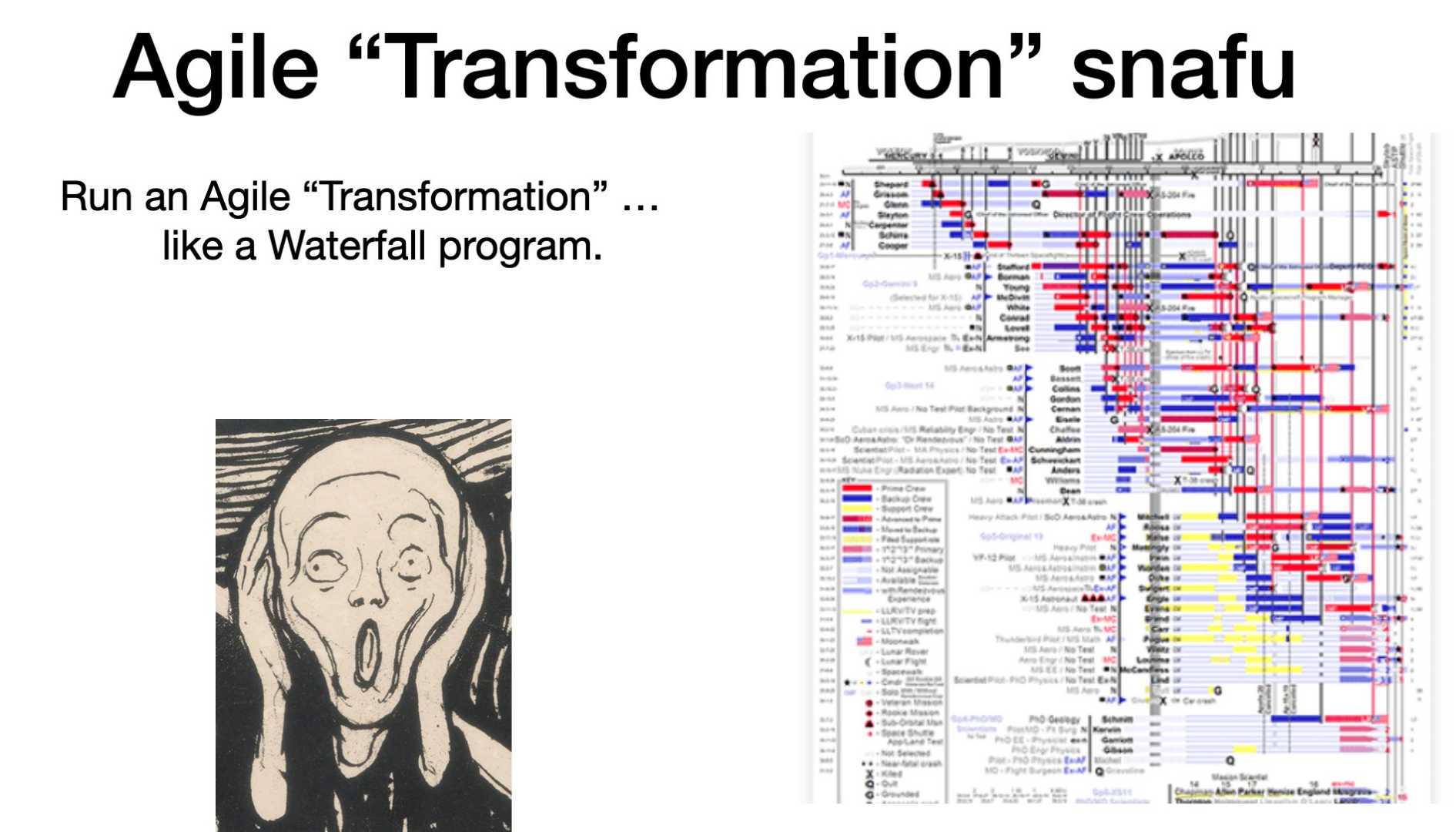
Agile Transformation like a Waterfall programme
The word 'Transformation' indicates moving from the current state to a new state predicted in advance. And it often assumes it is OK to remain in a fixed state afterwards. It goes against the core philosophy of Agility, Sunil Mundra says. A company typically starts an Agile Transformation with a traditional approach: defining the goals, scope, size, timeline and roadmap all upfront and managing the transformation like a large Waterfall programme (predictive, prescriptive, top-down, in silos, in big batches). All this is for an endeavour that is novel to the company, has a lot of remaining ambiguity around what change means to different people, and where the type of change the company need is still unknown. Therefore it is unlikely to succeed. An Agile Adoption, on the other hand, is an open-ended effort to adopt Agile in an Agile way. As such, it can deal effectively with the novelty, the ambiguity, the uncertainties and the unknowns inherent in such endeavour. An Agile Adoption typically starts small and proceeds with an iterative and incremental empirical approach. It is collaborative and holistic, it starts with an invitation. It then gradually goes through an experimentation and learning process to discover what works and what not and how to adapt things to the specific context and the evolving circumstances. It often starts locally and bottom-up before inviting an organisation-wide leadership's drive and the middle managers' middle-out approach.
Here you can find a summary of the journey of a few companies adopting Agile ![]() .
.